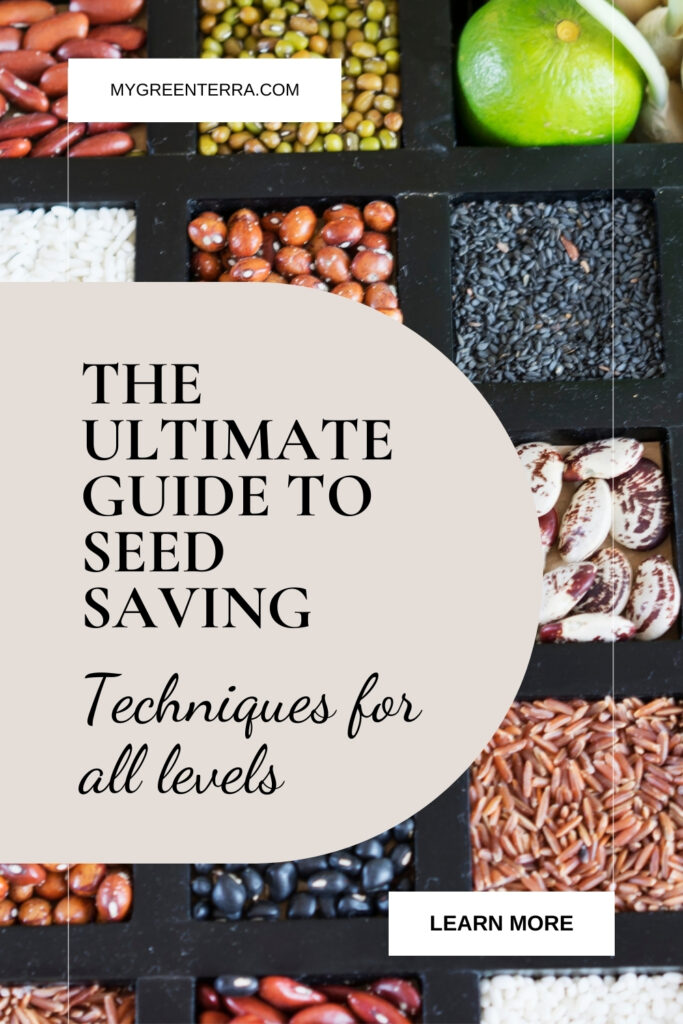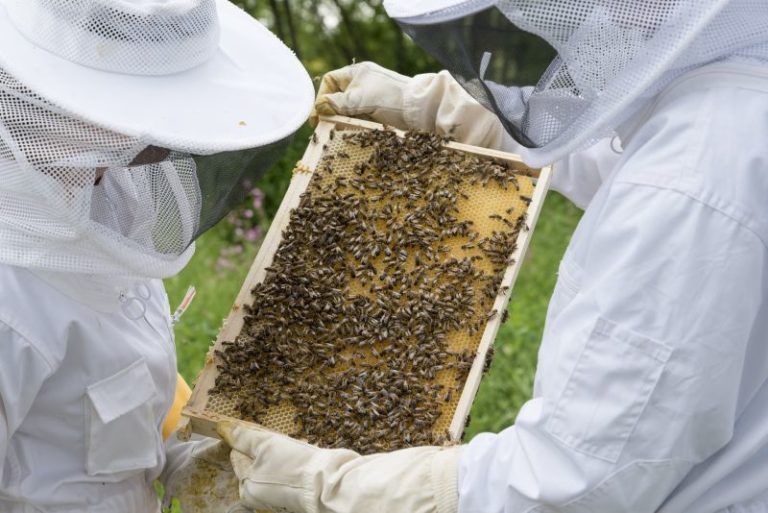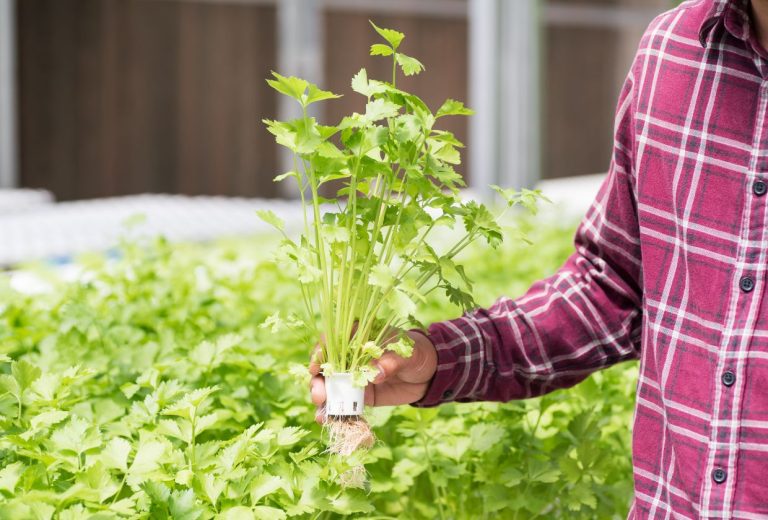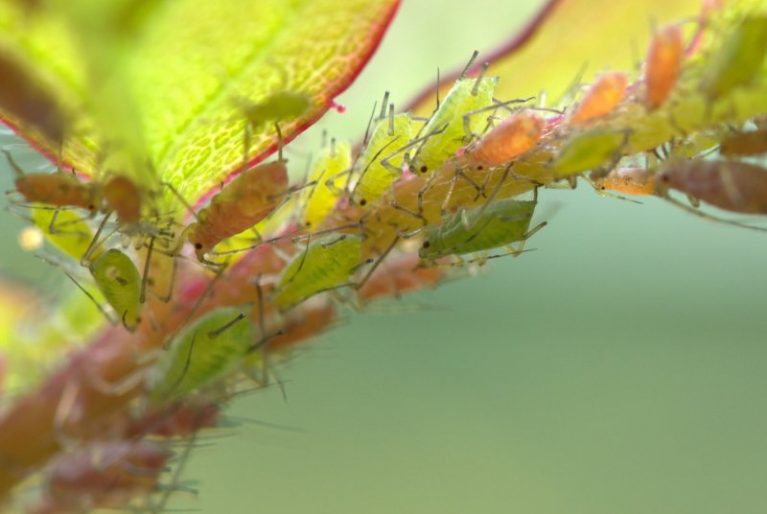The Ultimate Guide to Saving Seeds: Techniques for Beginners and Experts
I get commissions for purchases made through links in this post. View our Affiliate Disclaimer.
Saving seeds is an ancient practice that has played a crucial role in agriculture and horticulture for thousands of years. It involves collecting and preserving seeds from plants to grow future generations. This practice helps maintain the genetic diversity of plants and empowers gardeners, homesteaders, and farmers to cultivate crops well-suited to their local environments.
By saving seeds, gardeners can reduce their dependence on commercial seed companies, ensuring that they have a steady supply of seeds for their favorite plants. This is especially important for those growing heirloom and open-pollinated varieties, which are known for their consistent traits and adaptability to specific climates.
One of the key benefits of saving seeds is the preservation of plant genetics. With the rise of hybrid varieties, many traditional and heirloom plant varieties are at risk of being lost. Seed saving helps preserve these varieties, which often have unique flavors, colors, and resistances to local pests and diseases. This preservation is not just a nod to history; it is a vital part of maintaining biodiversity and ensuring food security for future generations.
Seed saving can lead to cost savings for gardeners. Instead of purchasing new seeds every year, gardeners can rely on their own saved seeds, which can lead to significant savings over time. Furthermore, saving seeds allows gardeners to select plants with desirable traits, such as improved taste, increased yield, or better resilience to local growing conditions, creating a garden that is tailor-made to their needs.
In this guide, I aim to provide beginners and experienced gardeners with the knowledge and techniques to successfully save seeds. From understanding the differences between seed types to mastering the methods of harvesting, cleaning, and storing seeds, this guide will equip you with the skills to become a proficient seed saver. Whether you are looking to preserve rare heirloom varieties or simply save money on seeds, this guide is your ultimate resource for saving seeds.
Key Takeaways
- Develop a deep understanding of seed types, pollination, and germination to optimize seed saving techniques.
- Select plant varieties suited to your climate and growing conditions to ensure successful harvests.
- Master effective seed harvesting and cleaning techniques to preserve seed viability and germination.
- Store seeds properly in a cool, dry place, away from sunlight and moisture, to maintain seed viability.
- Experiment with advanced techniques like hand-pollination, controlled breeding, and fermentation to enhance seed quality and diversity.
Understanding Seed Basics
Understanding the different types of seeds is fundamental to successful seed saving. This section explores the distinctions between open-pollinated and hybrid seeds, as well as the varying life cycles of annuals, biennials, and perennials.
These concepts are vital for gardeners aiming to preserve specific plant traits and ensure the viability of their saved seeds. By mastering these basics, you can make informed decisions about which seeds to save and how to manage your garden for optimal seed production.
Open-Pollinated vs. Hybrid Seeds
One of the foundational concepts in saving seeds is understanding the difference between open-pollinated and hybrid seeds. Open-pollinated seeds are those that result from natural pollination methods such as wind, insects, or self-pollination. These seeds, when saved and planted, will produce plants that are genetically similar to the parent plants, ensuring that the traits you admire in your plants are preserved year after year. This stability makes open-pollinated seeds ideal for seed saving.
In contrast, hybrid seeds are the result of controlled cross-pollination between two different parent plants, chosen for their desirable traits. While hybrid plants often exhibit improved vigor and productivity (a phenomenon known as hybrid vigor), the seeds they produce do not reliably breed true. This means that the offspring of hybrid plants may not retain the same characteristics, making them less suitable for seed saving.
Annuals, Biennials, and Perennials

Plants can also be classified based on their life cycles into annuals, biennials, and perennials, which affects how and when you save their seeds:
- Annuals: These plants complete their life cycle in a single growing season. They grow, flower, set seeds, and die all within one year. Common examples include tomatoes, lettuce, and peas. Saving seeds from annuals is relatively straightforward, as you can collect seeds at the end of the growing season.
- Biennials: These plants require two growing seasons to complete their life cycle. In the first year, they grow vegetatively, and in the second year, they flower, set seeds, and then die. Examples include carrots, beets, and onions. Seed saving from biennials involves overwintering the plants to allow them to produce seeds in their second year.
- Perennials: These plants live for more than two years, often producing seeds multiple times over their lifespan. Examples include asparagus, rhubarb, and many fruit trees. Seed saving from perennials can be more complex, as it involves harvesting seeds over several growing seasons.
Benefits of Open-Pollinated Seeds
Using open-pollinated seeds has several advantages. First, they help preserve genetic diversity, which is crucial for the adaptability and resilience of plant species. This genetic variety can be vital in adapting to changes in climate and pest pressures.
Second, saving seeds from open-pollinated plants allows gardeners to gradually select for traits that are particularly well-suited to their local conditions. Over time, this can result in plants that are more productive, tastier, or more resistant to local pests and diseases.
Hybrid Seeds: Pros and Cons
While hybrid seeds are not typically suitable for seed saving, they do have their own set of advantages. Hybrids can be bred to combine the best traits of both parent plants, such as disease resistance, increased yield, and improved fruit quality. These benefits can be particularly useful for commercial growers who prioritize uniformity and productivity.
However, the main drawback is that hybrid seeds do not produce true-to-type offspring, meaning the plants grown from these seeds may not retain the desirable traits of the parent plants. For gardeners interested in maintaining specific plant characteristics year after year, open-pollinated seeds and heirloom seeds are the better choice.
Understanding these fundamental differences in seed types is the first step in becoming a proficient seed saver. By selecting the right types of seeds and knowing the life cycle of your plants, you can ensure a successful and sustainable gardening practice.

Pollination Methods
Understanding how plants pollinate is crucial for successful seed saving. Different pollination methods impact how and whether seeds will remain true to their parent plants. Here, we will explore self-pollination, cross-pollination, and the techniques to manage these processes to ensure pure seed saving.
Self-Pollination
Self-pollination occurs when a flower’s own pollen fertilizes its ovules. This process is common in many garden plants, such as tomatoes, peas, beans, and lettuce. Because self-pollinating plants do not rely on external pollinators like insects or wind, their seeds are more likely to produce offspring that are true to the parent plant’s characteristics.
Advantages of Self-Pollination
- Consistency: Plants grown from self-pollinated seeds generally retain the parent plant’s traits.
- Simplicity: Self-pollinating plants are easier to manage for seed saving, making them ideal for beginners.
Examples of Self-Pollinating Plants
- Tomatoes: The tomato flowers typically self-pollinate before they even open, reducing the risk of cross-pollination.
- Peas and Beans: Their flowers are structured to promote self-pollination and reduce insect interference.
Cross-Pollination
Cross-pollination occurs when pollen from one plant fertilizes the ovules of a different plant, which can happen via wind, insects, or other animals. This method is common in plants like corn, squash, and cucumbers. While cross-pollination can increase genetic diversity, it poses a challenge for seed savers who want to preserve specific plant traits.
Challenges of Cross-Pollination
- Genetic Variation: Seeds from cross-pollinated plants may not produce offspring that match the parent plants’ traits, making it harder to achieve uniformity in future generations.
- Isolation Requirements: To prevent unwanted cross-pollination, gardeners need to manage plant spacing or use physical barriers.
Examples of Cross-Pollinating Plants
- Corn: Wind-borne pollen can travel significant distances, making isolation crucial for pure seed saving.
- Squash and Cucumbers: These plants rely on insects for pollination, which means varieties can easily cross-pollinate if grown too closely together.
Techniques to Manage Pollination
To ensure the purity of saved seeds, gardeners can employ several strategies to manage pollination:
1. Isolation by Distance
- Plant Spacing: Increase the distance between different varieties of the same species. This method is particularly effective for wind-pollinated plants like corn, which may require several hundred feet of separation.
- Garden Layout: Plan your garden layout to separate varieties that are prone to cross-pollination. Use natural barriers like hedges or buildings to block pollen drift.
2. Timing Plantings
- Staggered Planting: Time plantings so that different varieties flower at different times, reducing the risk of cross-pollination. This technique is especially useful in small gardens where space is limited.
3. Physical Barriers
- Cages and Row Covers: Use mesh cages or row covers to physically prevent insects from transferring pollen between plants. This method is effective for insect-pollinated crops like squash and cucumbers.
- Hand Pollination: For small-scale gardens, hand pollination can ensure that only desired pollen fertilizes the flowers. This involves manually transferring pollen using a brush or cotton swab and then bagging the flowers to prevent accidental cross-pollination.
By understanding the different methods of pollination and implementing strategies to manage them, gardeners can ensure that their saved seeds will grow into plants that faithfully reproduce the desired traits of their parent plants. Whether you are growing for flavor, productivity, or disease resistance, mastering these techniques will enhance your success as a seed saver.
Seed Collection Techniques

Collecting seeds at the right time and in the right way is crucial for successful seed saving. This section outlines the techniques for harvesting seeds for seed saving from both dry-fruited and wet-fruited plants, ensuring they are mature and viable for future planting.
Timing and Maturity
The first step in seed collection is understanding when the seeds are ripe and ready for harvesting. Seeds must reach full maturity on the plant before being collected, as immature seeds are less likely to germinate successfully.
Market Maturity vs. Seed Maturity
- Market Maturity: This is when fruits and vegetables are ready for consumption, which often occurs before seeds are fully mature.
- Seed Maturity: This is when seeds are viable for planting, often requiring additional time on the plant even after the produce is no longer edible.
For example, a tomato might be ready to eat when it turns red and soft, but the seeds inside need more time to mature. Similarly, beans are edible while still green, but the seeds should be left on the plant until the pods turn brown and dry.
Harvesting Seeds from Dry Fruits
Dry-fruited plants, such as beans, peas, and radishes, produce seeds that dry naturally on the plant. The process of collecting these seeds is relatively straightforward:
Drying on the Plant
Allow seeds to dry fully on the plant. Pods and seed heads should be left until they are completely dry and start to split or shatter.
If wet weather threatens, plants can be pulled up and hung indoors to finish drying.
Threshing
Threshing involves separating seeds from the plant material. This can be done by hand, rubbing pods between your fingers, or using a rough surface to break them open.
For larger quantities, placing pods in a sack and shaking or stepping on them can help release the seeds.
Cleaning
Once seeds are separated from their pods, they need to be cleaned to remove any remaining plant debris. This can be done through winnowing, which uses air to blow away lighter chaff, or through screening, which uses sieves to separate seeds by size.
Harvesting Seeds from Wet Fruits
Wet-fruited plants, such as tomatoes, cucumbers, and melons, have seeds embedded in the flesh. These seeds require a different approach to ensure they are clean and viable:
Extracting
Cut open the fruit and scoop out the seeds along with the surrounding pulp.
Fermentation (if needed)
For seeds with a gelatinous coating, such as tomatoes and cucumbers, a fermentation process is used to remove this layer. Place the seeds and pulp in a container with water and allow them to ferment for several days. The viable seeds will sink, while the pulp and non-viable seeds will float and can be poured off.
Cleaning
After fermentation, rinse the seeds thoroughly to remove any remaining pulp. This can be done using a sieve or strainer under running water.
Drying
Spread the cleaned seeds on a non-porous surface like a glass or ceramic dish. Stir them daily to ensure even drying and prevent mold. Seeds should be completely dry before storage, which may take several weeks depending on the seed type and environmental conditions.
Ensuring Seed Viability
Proper drying and storage are critical to maintaining seed viability. Seeds must be stored in a cool, dry, and dark place. Silica gel packets can help control moisture, and seeds should be labeled with the plant name and harvest date to avoid mix-ups.
By following these seed collection techniques, gardeners can ensure they are saving high-quality seeds that will germinate successfully and produce healthy plants in future growing seasons. This careful approach to seed saving not only preserves the genetic integrity of your garden plants but also contributes to a sustainable gardening practice.

Seed Cleaning and Drying
Proper cleaning and drying of seeds are essential steps in seed saving. These processes ensure that the seeds remain viable and free from diseases, making them ready for storage and future planting. The methods used can vary depending on whether the seeds come from dry or wet-fruited plants.
Wet Processing
Wet processing is used for seeds that are embedded in the moist flesh of fruits, such as tomatoes, cucumbers, and melons. Here are the detailed steps involved in wet processing:
Extracting
Remove the seeds along with the surrounding pulp from the fruit. This can be done by cutting open the fruit and scooping out the seeds.
Fermentation
Some seeds, like tomatoes and cucumbers, require fermentation to remove the gelatinous coating that inhibits germination. Place the seeds and pulp in a container and add water. Allow the mixture to ferment for 2-4 days. Stir the mixture daily. Good seeds will sink to the bottom, while the bad seeds and pulp will float and can be poured off .
Cleaning
After fermentation, rinse the seeds thoroughly under running water using a sieve. This removes any remaining pulp and non-viable seeds.
Drying
Spread the cleaned seeds in a single layer on a non-porous surface like a ceramic plate or glass dish. Stir them daily to ensure even drying and prevent mold. Seeds should be dried in a well-ventilated area away from direct sunlight.
Dry Processing
Dry processing is suitable for seeds from plants that produce dry fruits or pods, such as beans, peas, and radishes. The process involves the following steps:
Drying on the Plant
Allow the seeds to dry fully on the plant if possible. Pods and seed heads should remain on the plant until they are completely dry and start to split or shatter. If wet weather threatens, you can pull up the entire plant and hang it indoors to finish drying.
Threshing
Threshing is the process of separating seeds from their pods or husks. This can be done by hand, rubbing the pods between your fingers, or by using a rough surface to break them open. For larger quantities, placing pods in a sack and shaking or stepping on them can help release the seeds.
Cleaning
Once the seeds are separated from their pods, they need to be cleaned to remove any remaining plant debris. This can be done through:
- Winnowing: Using air to blow away lighter chaff. You can pour the seeds from one container to another in front of a fan or in a gentle breeze.
- Screening: Using sieves or screens with holes of appropriate sizes to separate seeds from larger pieces of debris. This method is effective for small seeds.
Ensuring Seed Viability
Ensuring that seeds are thoroughly dry is crucial for long-term storage. Moisture can lead to mold and spoilage, reducing the viability of the seeds. Here are some tips for effective drying:
- Environment: Dry seeds in a cool, dry, and well-ventilated area. Avoid direct sunlight, which can damage the seeds.
- Tools: Spread seeds on a non-porous surface such as a ceramic plate or a glass dish. Stir them daily to ensure even drying. For small seeds, you can use paper towels initially to absorb moisture but transfer them to a non-porous surface once they are less moist to avoid sticking.
By following these detailed methods for cleaning and drying seeds, gardeners can ensure they are storing high-quality seeds that are ready to germinate and produce healthy plants in the next growing season. Properly processed seeds are the foundation of a successful seed-saving practice, contributing to sustainable gardening and the preservation of plant diversity.
Seed Storage

Proper seed storage is crucial for maintaining the viability and longevity of your saved seeds. Without proper storage, seeds can become less viable over time, reducing their ability to germinate. This section will guide you through the best practices for storing your seeds to ensure they remain healthy and ready for future planting.
Optimal Storage Conditions
Seeds need to be stored in conditions that minimize their exposure to moisture, heat, and light. The ideal storage environment is cool, dark, and dry. Here are some detailed tips to achieve these conditions:
1. Cool Temperatures
- Store seeds in a cool place, ideally at temperatures between 32°F and 41°F (0°C to 5°C). Many gardeners use a refrigerator for this purpose, as it provides a consistent, cool environment.
- Avoid storing seeds in places that experience temperature fluctuations, such as attics, garages, or near windows.
2. Low Humidity
- Moisture is one of the biggest enemies of seed viability. To control humidity, store seeds in airtight containers with desiccants like silica gel packets to absorb any excess moisture.
- Ensure seeds are thoroughly dried before storage to prevent mold and rot. Seeds should be brittle and break easily if dry enough.
3. Darkness
Light can trigger seed germination or degrade seed quality over time. Store seeds in opaque containers or in a dark location to protect them from light exposure.
Types of Storage Containers
Choosing the right container is essential for maintaining the ideal storage conditions. Here are some container options:
1. Glass Jars
Glass jars with tight-fitting lids are excellent for seed storage because they are impermeable to moisture and pests. Adding a silica gel packet inside can help maintain low humidity levels.
2. Plastic Containers
Plastic containers with airtight seals can also be effective, but ensure they are made from food-grade plastic to avoid chemical leaching.
3. Paper Envelopes
For short-term storage, paper envelopes are suitable as they allow seeds to breathe. However, for long-term storage, paper envelopes should be placed inside airtight containers to control humidity.
Labeling and Organization
Proper labeling and organization are crucial to keep track of your seed collection. Here are some best practices:
Labeling
- Always label your seed containers with the plant name, variety, and date of harvest. This information helps you track the age of your seeds and ensures you use them within their optimal viability period.
- Use waterproof markers or labels to ensure the information remains readable over time.
Organization
Group seeds by type and storage date, and keep an inventory list to easily find and rotate your seeds. This helps in managing seed viability and ensures older seeds are used first.
Long-Term Storage Strategies
For those looking to store seeds for several years, consider the following strategies to maximize longevity:
Freezing
Freezing seeds can extend their lifespan significantly. However, it is crucial to ensure seeds are completely dry before freezing to prevent ice crystal formation, which can damage the seeds. Store seeds in airtight containers to protect them from moisture during the freeze-thaw cycle.
Vacuum Sealing
Vacuum sealing removes air and reduces the risk of moisture infiltration. This method is particularly useful for long-term storage in a freezer or refrigerator.
By following these seed storage techniques, you can ensure your seeds remain viable and ready for planting when needed. Proper storage not only preserves the genetic integrity of your seeds but also supports a sustainable gardening practice by reducing the need for new seed purchases each season.
Additional Must-Have Resources For Successful Homesteading
Get Yours Now!
Advanced Techniques and Tips
For those who are ready to take their seed-saving skills to the next level, there are several advanced techniques and tips that can enhance the quality and viability of your saved seeds. These methods are particularly useful for those who wish to develop specific plant traits or ensure the highest possible germination rates.
Selective Breeding for Desired Traits
Selective breeding involves choosing plants with desirable characteristics to save seeds from, gradually enhancing these traits over successive generations. This technique can be used to develop plants that are more productive, flavorful, or resistant to local pests and diseases.
Steps for Selective Breeding:
- Identify Desired Traits: Decide on the traits you wish to enhance, such as drought tolerance, disease resistance, or improved flavor.
- Select Parent Plants: Choose the healthiest and most vigorous plants that exhibit these traits. Avoid using seeds from weak or diseased plants.
- Cross-Pollination Control: For plants that cross-pollinate, manually transfer pollen from selected plants to ensure that only desired traits are passed on. Bagging flowers or using isolation techniques can help prevent unwanted cross-pollination.
- Harvest and Save Seeds: Collect seeds from the best plants, ensuring they are fully mature and properly dried before storage.
Hand Pollination Techniques
Hand pollination is a useful technique for controlling the breeding of plants, especially in small gardens where space limitations prevent the use of isolation distances. This method is particularly effective for insect-pollinated plants like squash and cucumbers.
How to Hand Pollinate:
- Identify Male and Female Flowers: Male flowers have thin stems and no fruit, while female flowers have a small fruit at their base.
- Transfer Pollen: Using a small brush or cotton swab, collect pollen from the male flower and gently transfer it to the stigma of the female flower.
- Bag the Flowers: After pollination, cover the flowers with a bag to prevent further pollination by insects. Remove the bag once the fruit begins to develop.
Seed Fermentation
Fermentation is an advanced technique used primarily for seeds with gelatinous coatings, such as tomatoes and cucumbers. This process not only removes the coating but also helps eliminate seed-borne diseases.
Steps for Seed Fermentation:
- Extract Seeds: Scoop out the seeds along with the surrounding pulp.
- Ferment: Place the seeds and pulp in a container with water and let it sit for 2-4 days, stirring daily. A layer of mold will form on the surface, which helps break down the gelatinous coating.
- Rinse and Dry: After fermentation, rinse the seeds thoroughly under running water to remove the pulp and mold. Spread the seeds on a non-porous surface to dry completely before storage.
Germination Testing
Testing the germination rate of your seeds ensures that you are storing viable seeds. This process involves sprouting a sample of seeds to see how many germinate successfully.
How to Perform a Germination Test:
- Select a Sample: Choose a random sample of at least 10 seeds from your batch.
- Prepare the Test: Place the seeds on a damp paper towel, fold it over them, and place the towel in a plastic bag to maintain moisture. Keep the bag in a warm place out of direct sunlight.
- Monitor and Count: Check the seeds daily and count how many have sprouted after a week. Calculate the germination rate by dividing the number of sprouted seeds by the total number of seeds tested.
Using Silica Gel for Storage
Silica gel is an excellent desiccant that helps maintain low humidity levels in your seed storage containers, ensuring the seeds remain dry and viable.
How to Use Silica Gel:
- Dry Seeds Thoroughly: Ensure seeds are completely dry before storage.
- Add Silica Gel: Place a small packet of silica gel in each seed storage container. You can purchase silica gel packets or reuse them from other products.
- Monitor Moisture Levels: Check the silica gel periodically. If it changes color (indicating it has absorbed moisture), replace it with a fresh packet.
By incorporating these advanced techniques into your seed-saving practices, you can improve the quality and viability of your saved seeds, contribute to the development of robust plant varieties, and ensure a successful and sustainable gardening experience.
Conclusion
Seed saving is a rewarding practice that allows gardeners to preserve the genetic heritage of their plants, save money, and contribute to biodiversity. By understanding the fundamental principles of seed types and pollination methods, mastering the techniques of seed collection, cleaning, and drying, and implementing proper storage practices, you can ensure the viability and success of your saved seeds.
Whether you are a beginner starting with basic techniques or an experienced gardener exploring advanced methods like selective breeding and hand pollination, seed saving offers numerous benefits. It empowers you to cultivate plants that are well-suited to your local environment, promotes sustainability, and helps preserve heirloom and open-pollinated varieties for future generations.
As you embark on your seed-saving journey, remember that patience and attention to detail are key. Each step, from selecting the right plants to storing seeds in optimal conditions, contributes to the overall success of your gardening efforts. By following the guidelines and tips provided in this ultimate guide, you can become a proficient seed saver and enjoy the satisfaction of growing healthy, vigorous plants year after year.
Happy gardening, and may your seeds always sprout strong and true!
Frequently Asked Seed Saving Questions
What Is the Best Method to Save Seeds?
The best method for saving seeds is to master seed extraction, control moisture, and apply seed coatings. Then, store them dry, clean them, and test for germination rates while considering climate and preserving freshness.
How Do You Save Seeds for Beginners?
Start by selecting easy-to-save seeds like tomatoes or beans, avoiding common beginner mistakes. Then, learn simple storage and easy harvesting techniques, understand different seed types, and correctly label and dry your seeds for the best results.
What Are the Basics of Seed Storage?
You can increase seed viability by storing them in airtight containers in a cool, dry place, controlling climate, humidity, and temperature, using proper packaging, and organizing seeds by type, and monitoring storage duration.
Is It Worth Saving Seeds?
Saving seeds is totally worth it, as it’s cost-effective, promotes genetic diversity, and enhances food security, giving you personal autonomy and a sense of fulfillment, all while benefiting the environment and society as a whole.
Get more posts like this
Subscribe to our mailing list and get interesting homesteading and green living info and updates to your email inbox.
Thank you for subscribing.
Something went wrong.







